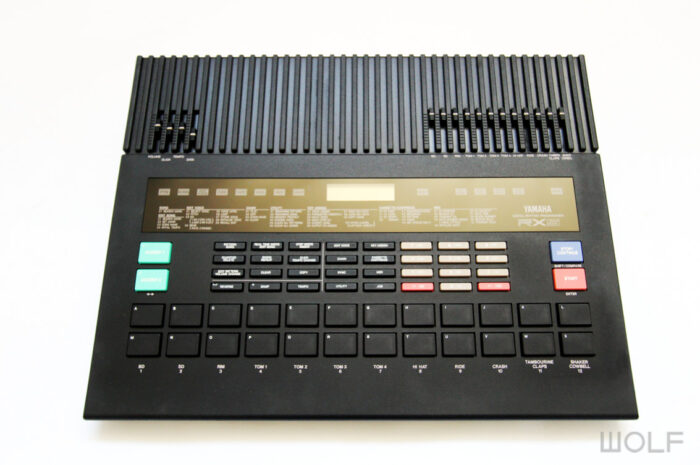WOLF retro DESIGN REVIEW. 13th July 2022
A retro review looks at products that are at least over ten years old from a present-day WOLF design perspective. While the technology and fashion of the period influence design, and are taken into consideration, great design ideas will transcend their eras to be timeless.
Interesting and factual information may be provided, but our review aims to deliver insight from the perspective of a designer’s mind and eyes.

Yamaha’s Drum machine King
Introduction
Product Focus
As with most reviews the focus is on the design and its evolution within the industry. The functioning systems and sound quality are not necessarily considered.
Product description
The RX5 was Yamaha’s flagship drum machine released in 1986. It was an important part of Yamahas second generation of FM products which included the DX7IID/FD, TX802 Tone generators and QX3 sequencer.
Price and Availability.
The RX5 is highly underrated and even as a piece of retro gear it lives in the shadows of legends like Roland’s TR-808 and Tr-909 machines. Therefore, these can still be found for a bargain. A functioning unit night cost as little as $100. A mint one with many ROM cartridges, manuals and case could be as much as $500.
Additional information
The RX5 had a lot features, well above most of its competition. Together with quality sounds it was rather unique in its day.
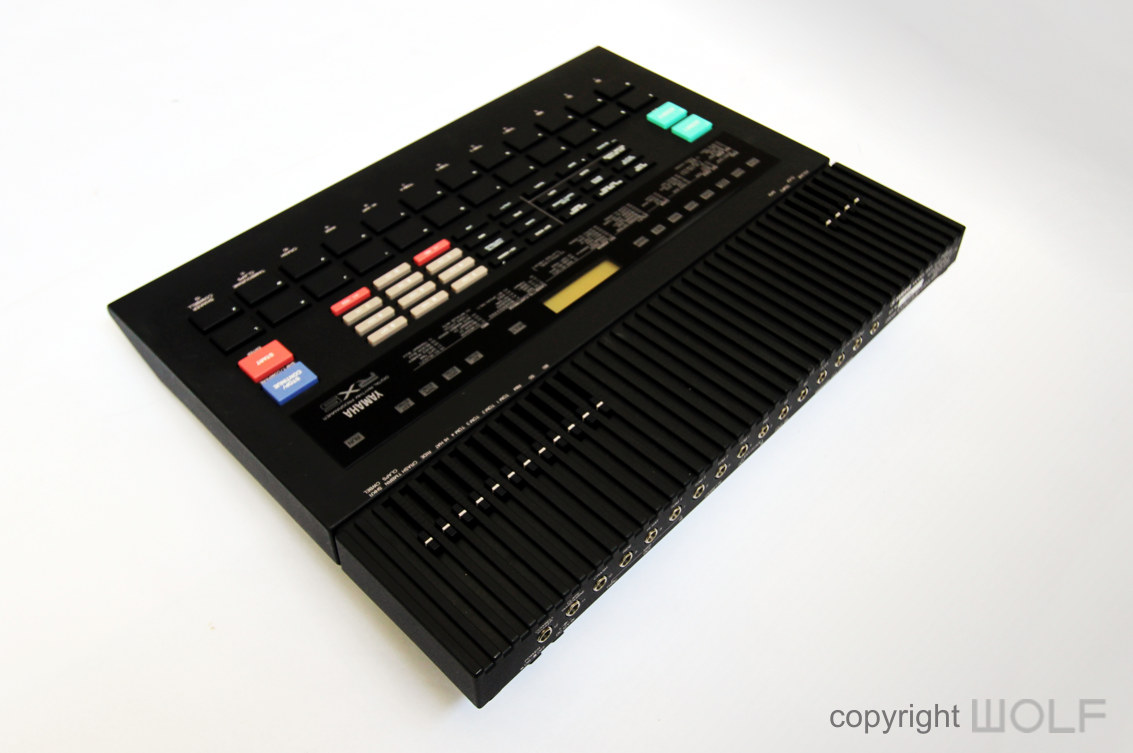
Review
First impression/ Delight
The RX5 is large for a drum machine, but this also emphasizes its authority as a King. It looks like a flagship machine but still friendly as a result of well-defined edges and sides that slenderize the overall unit. Its design is related to other digital Yamaha gear at the time and ready to compliment the mark II DX synthesizers.
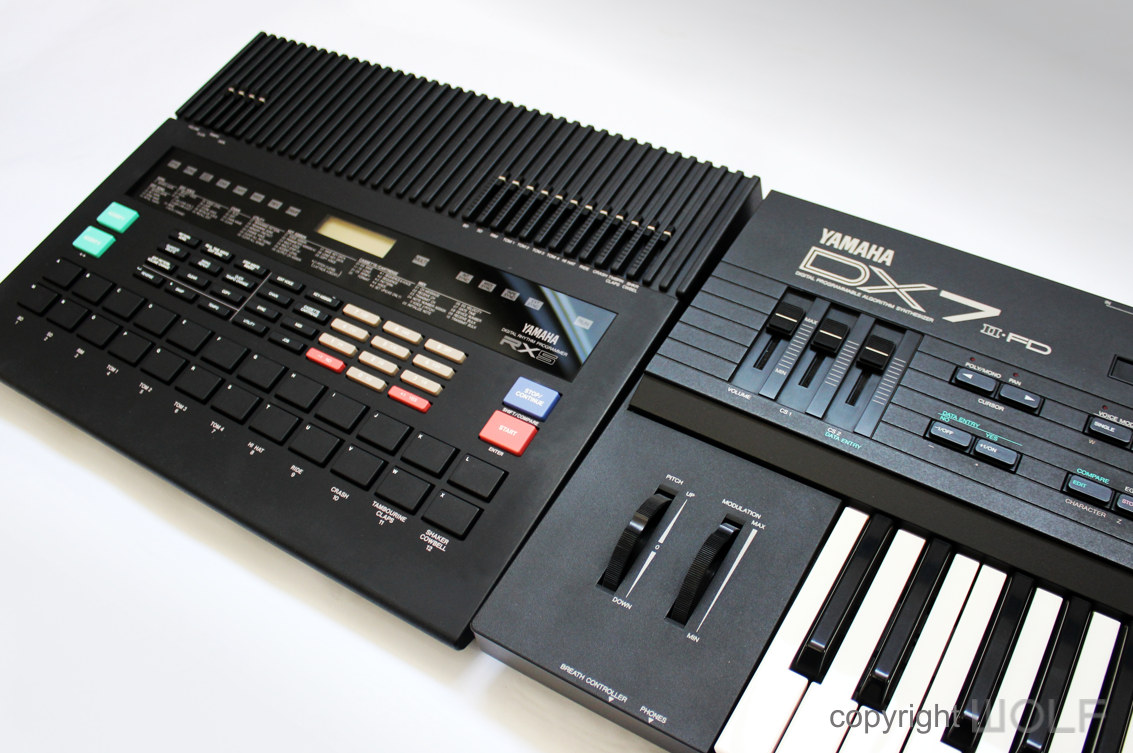
Exterior Design Review
Proportionately the RX5 is similar in width to the DX7IID/FD synths. In profile it is sleeker with neat black housing. The main panel is perfectly flat and arranged in bands of buttons, slide controllers and display. The screen is similar to those on the DX11 synthesizers.
On the top edge the RX5 has a corrugated surface of bars (several centimetres in length), that extend the from the top left to top right edges. This rhythmic gesture cleverly incorporates a group of slide controllers on the right end.
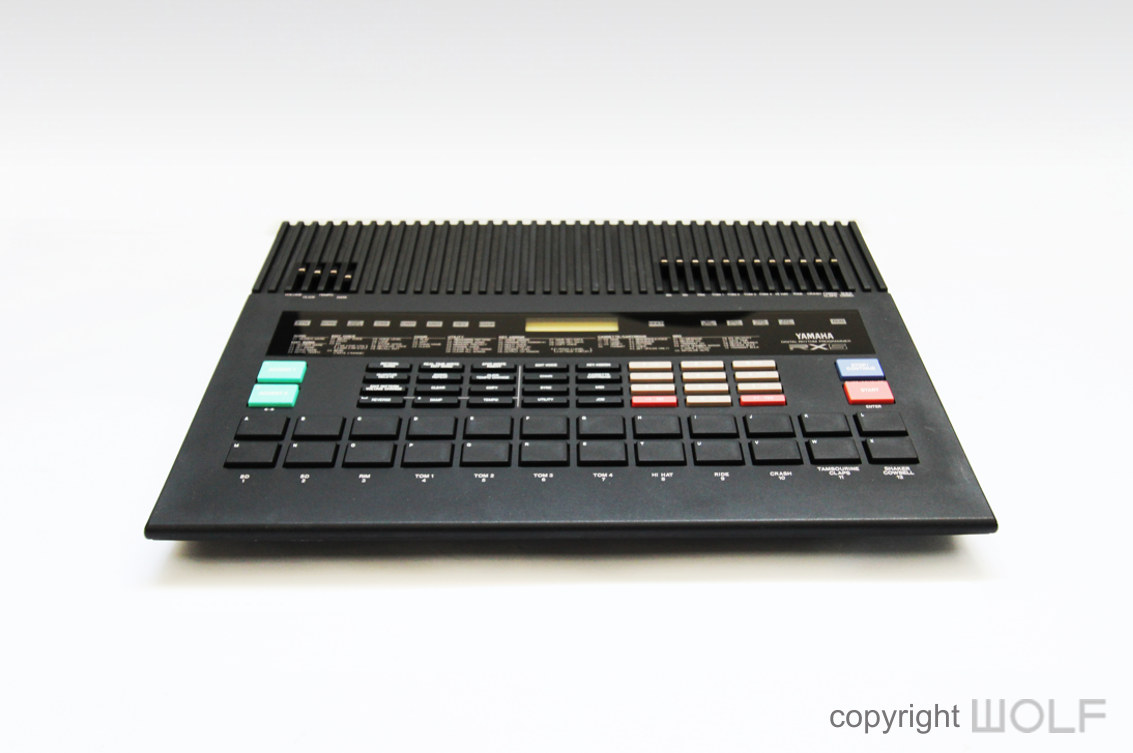
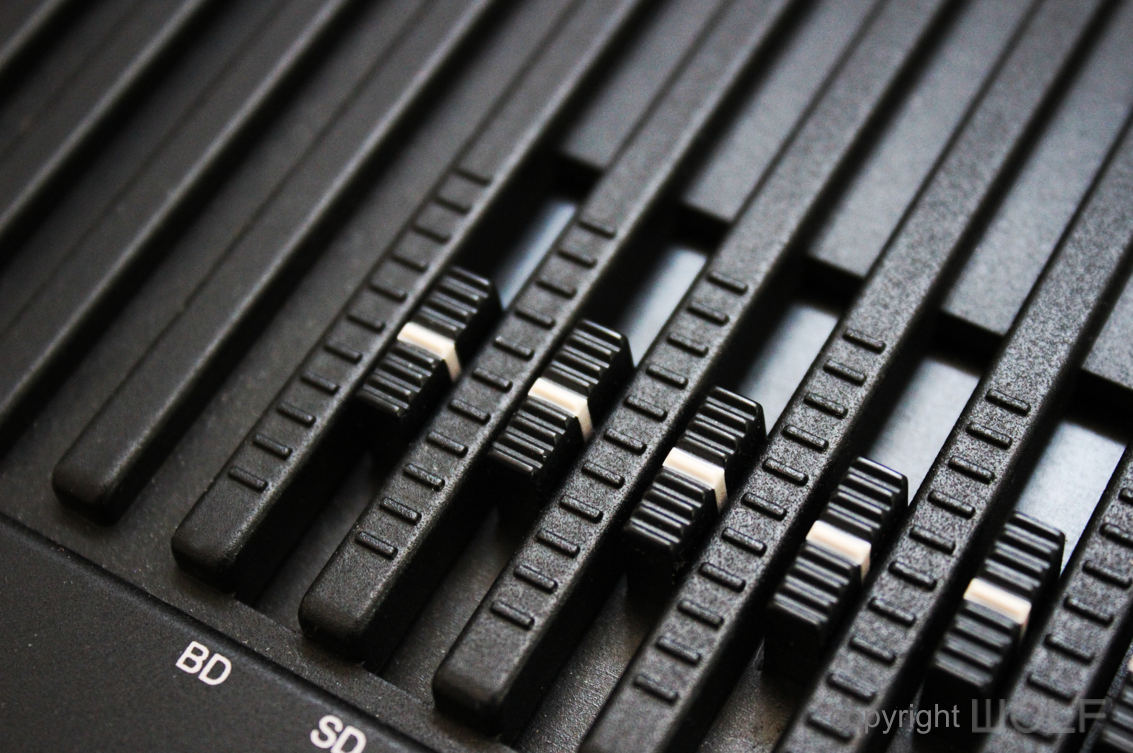
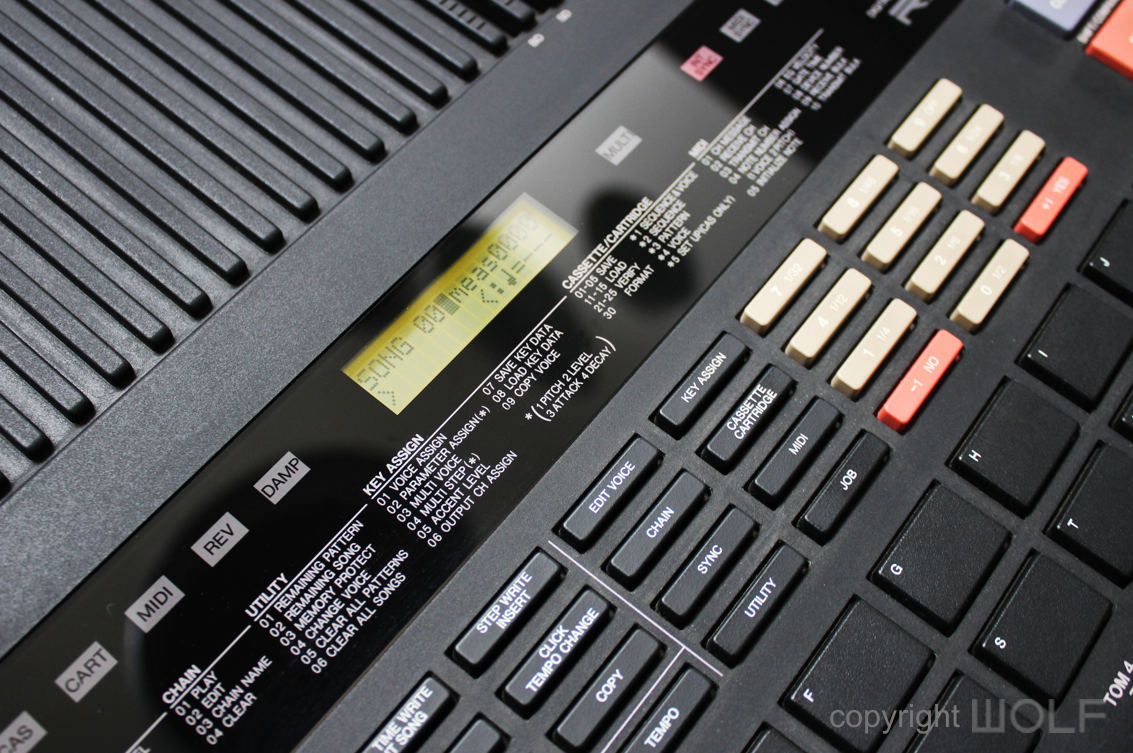

Craftmanship.
The late 80s, was a golden era for Yamaha in regards to design and craftmanship. A large investment into their product development was possible due to the hugely successful DX7 which took the World by storm. The RX5 belonged to a family of beautifully crafted black machines built with best materials and finishes in mind.
All buttons and sliders were made to be strong and durable. We have yet to see an RX5 with broken buttons, although the colour on some of them can discolour over time. The screen is clear and bright and encased in a large sheet of acrylic that spans the length of the unit. Some screens have been known to die or lose clarity over time and aftermarket screens are available. The casing is a high-grade plastic painted in matt black with fine grainy texture. The underside is all metal with rubber bumpers for grip.
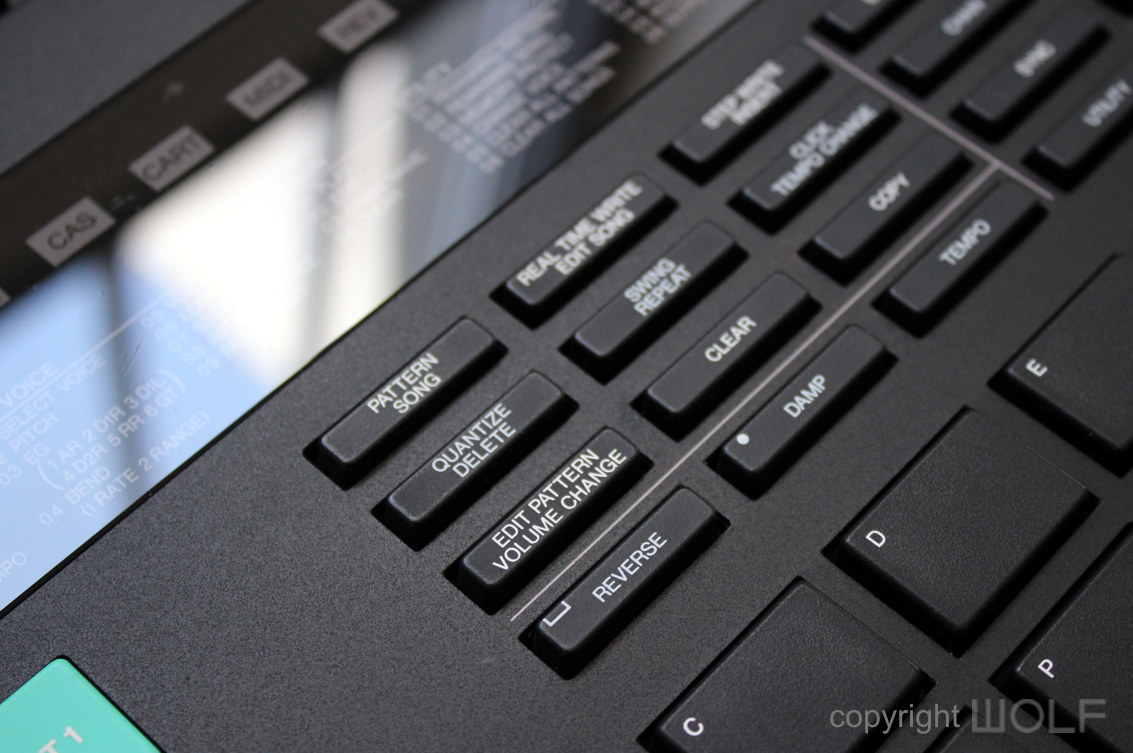
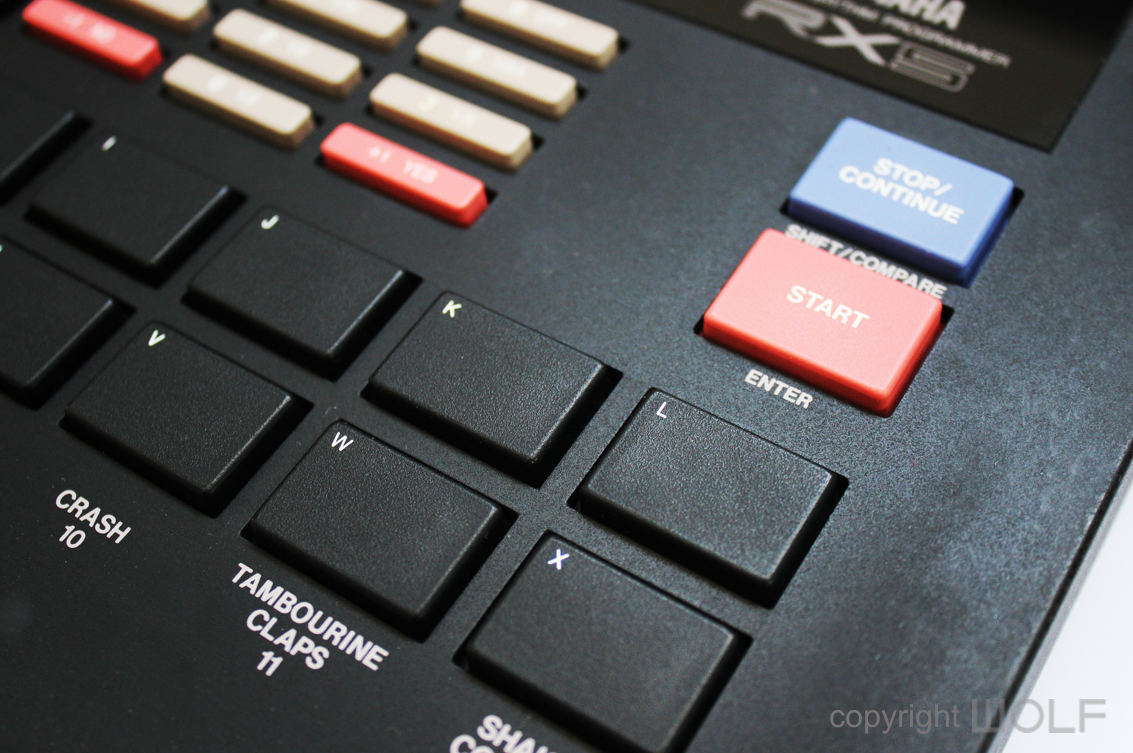
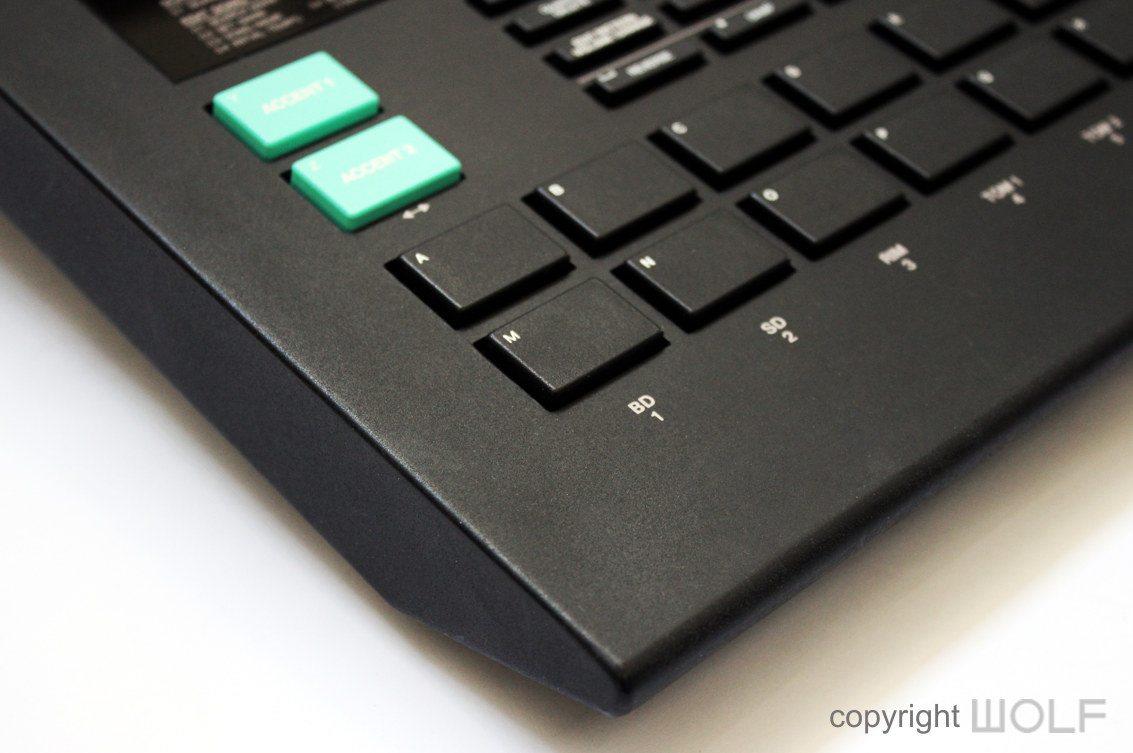

FUNCTION- Experience.
The buttons are well organised to be efficient and practical. They are a good size and designed to be pressed fast and hard. They are however noisy because there is no softness or padding beneath them. In our opinion they feel somehow loose with limited sensitivity.
The backlit screen displays information well and as a flagship it could have been larger like those on the QX3 and DXIID/FD machines. Within the acrylic band is text that clearly directs you to all the functions within. Two cartridge slots on the rear were excellent expansion for a drum machine in 1986.
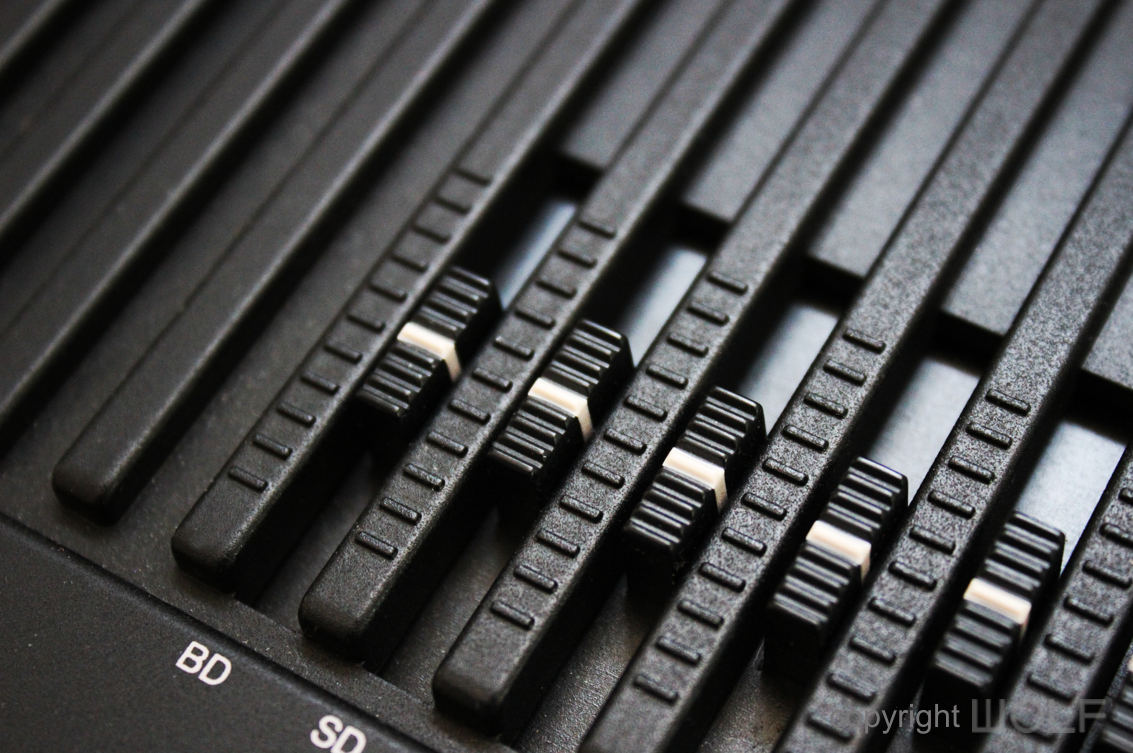
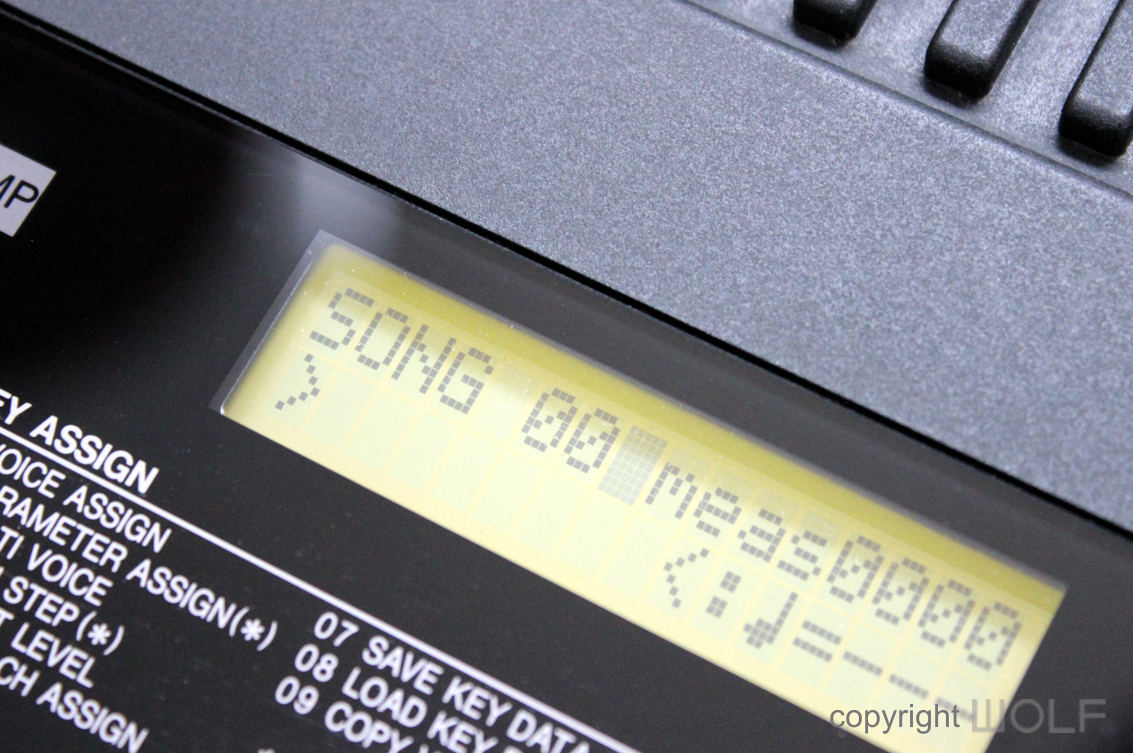


Desirability / Collectability and what to look for.
The RX5 was a quality machine and the design and craftsmanship reflect this well. Most are still in perfectly functioning order. The buttons tend to go very smooth and shiny, and so too will the corners of the unit from hand contact. The RX5 also had a very beautiful hard case which is rare and often only found in Japan. An original case does compliment the unit well.
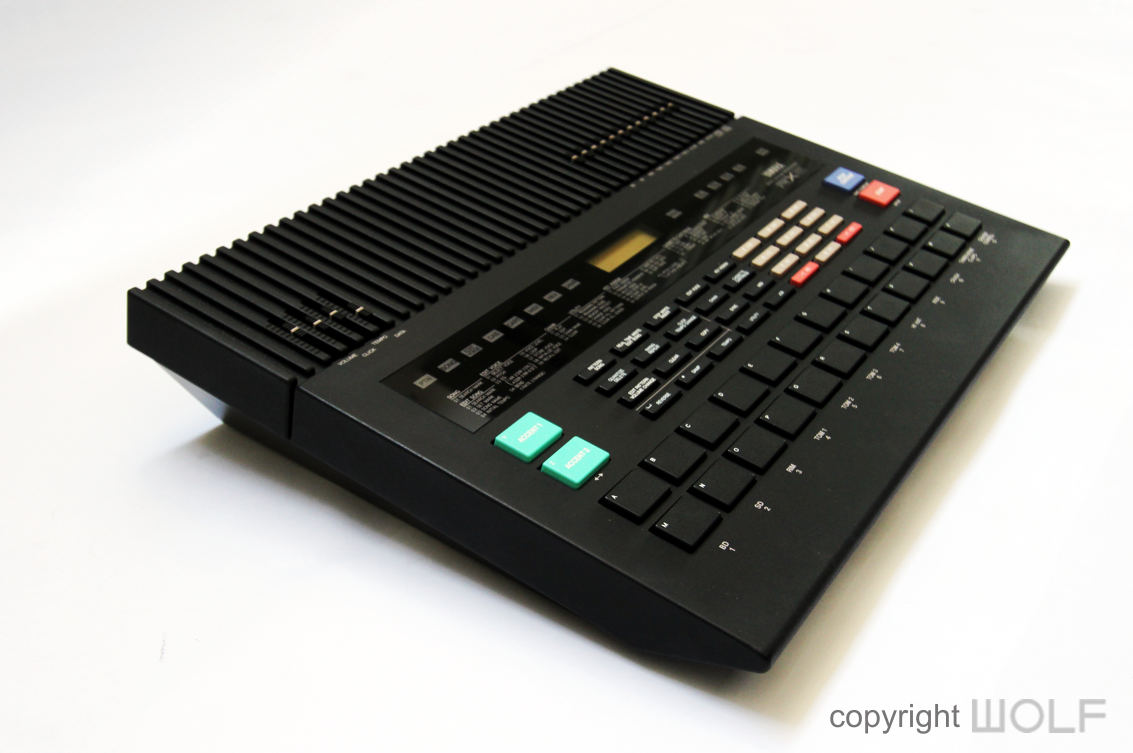
slender side profile

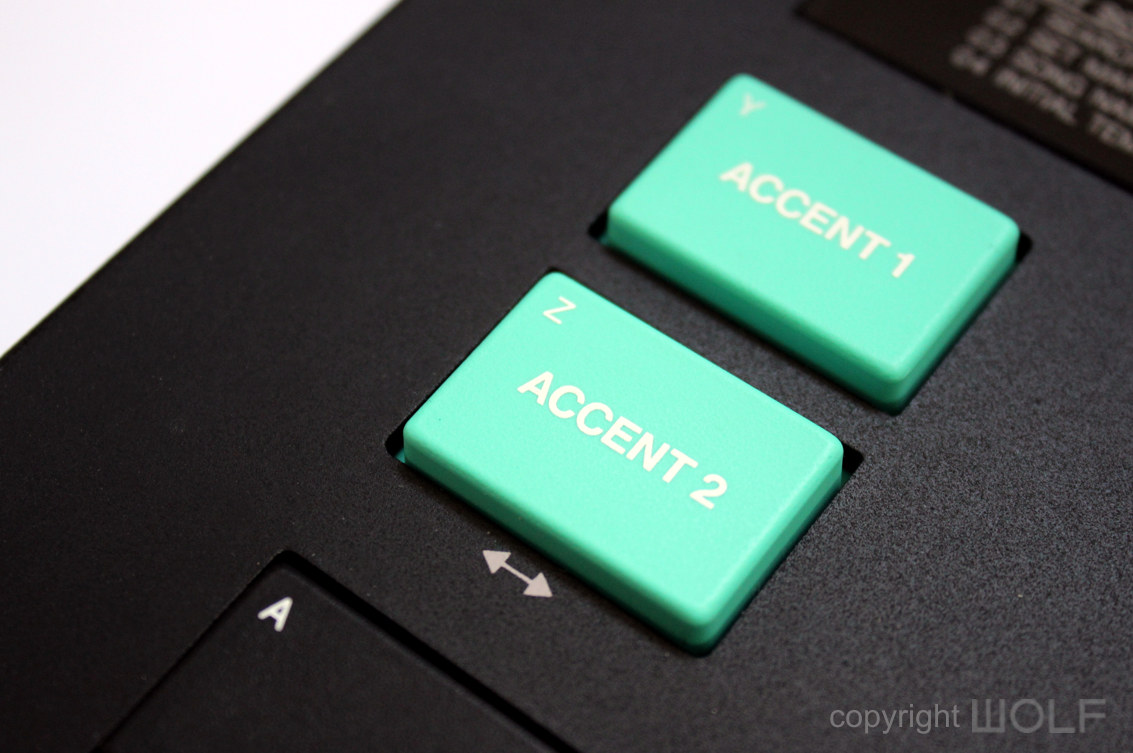
WORD OF THE WOLF
The RX5 is a beautiful piece of retro gear although it’s probably not as impressive today as it was in 1986. From a design perspective it was well conceived, elegant and well-constructed. They are highly undervalued and we think they are bound to start appreciating soon. Now could be a good time to secure a good one without hurting your wallet. Make sure it’s fully working, especially the screen because without it you are operating blind.


The RX5s manual had the same aqua coloured cover as most Yamaha digital instruments at the time, however it was unusually in landscape format.

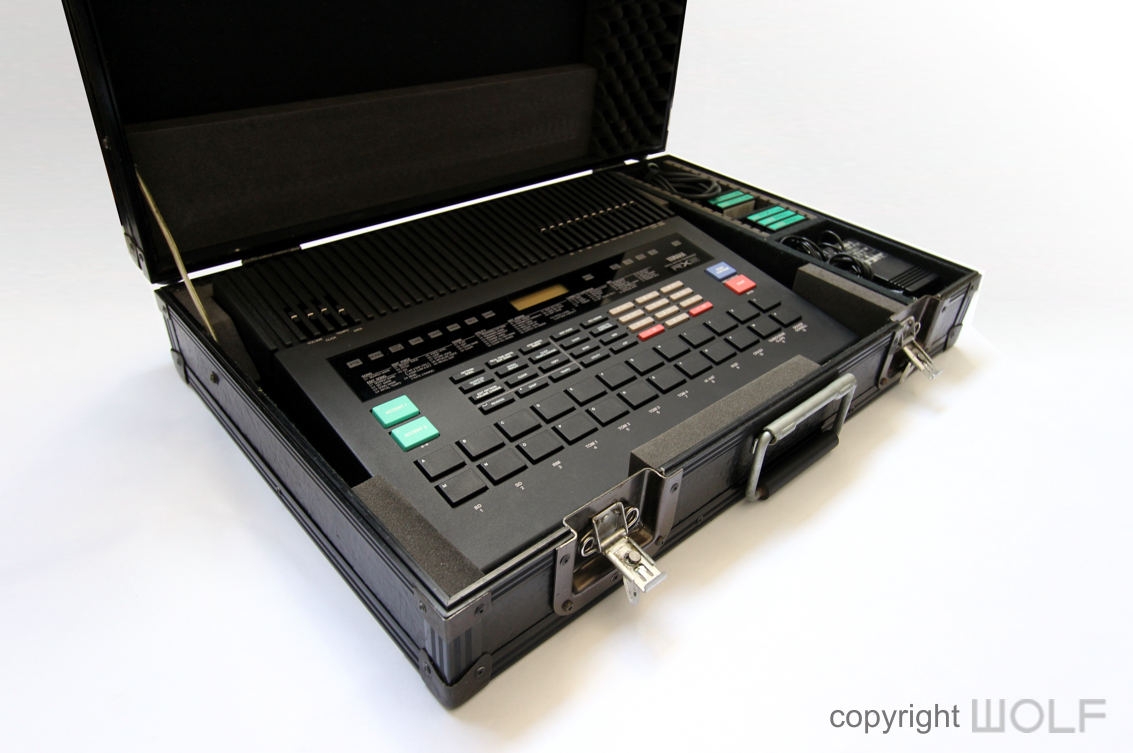
Rare RX5 case made out of the same high-quality materials as seen in the DX7IID/FD flight cases.
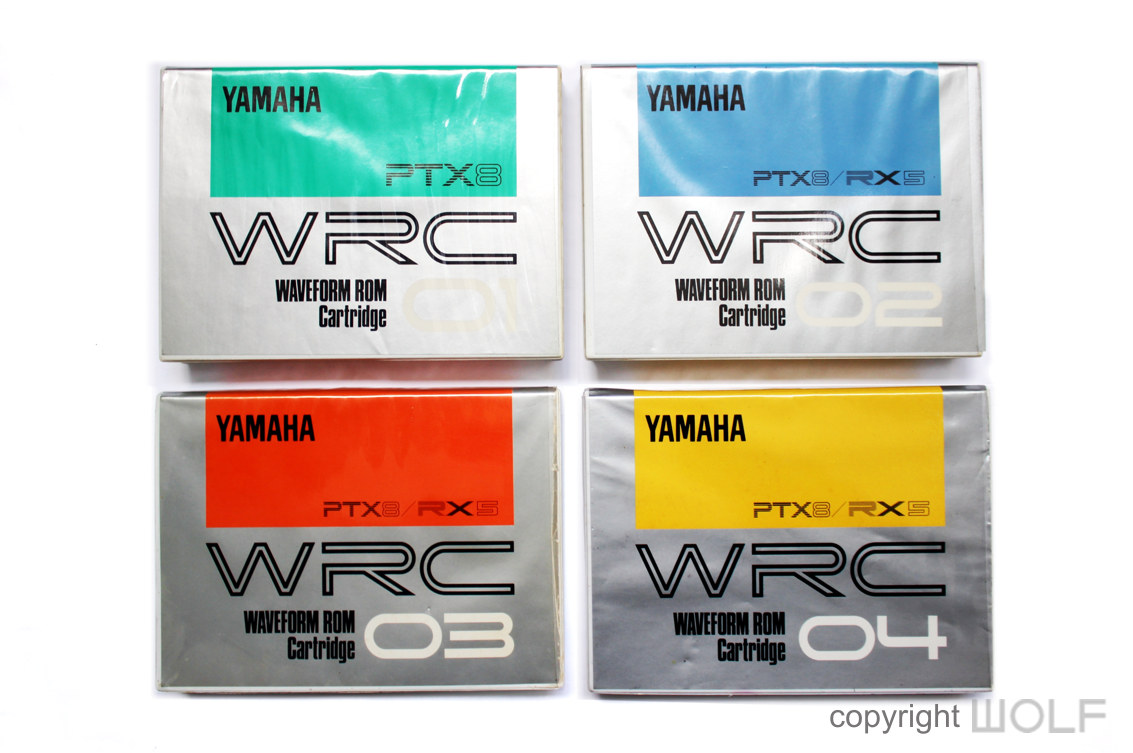
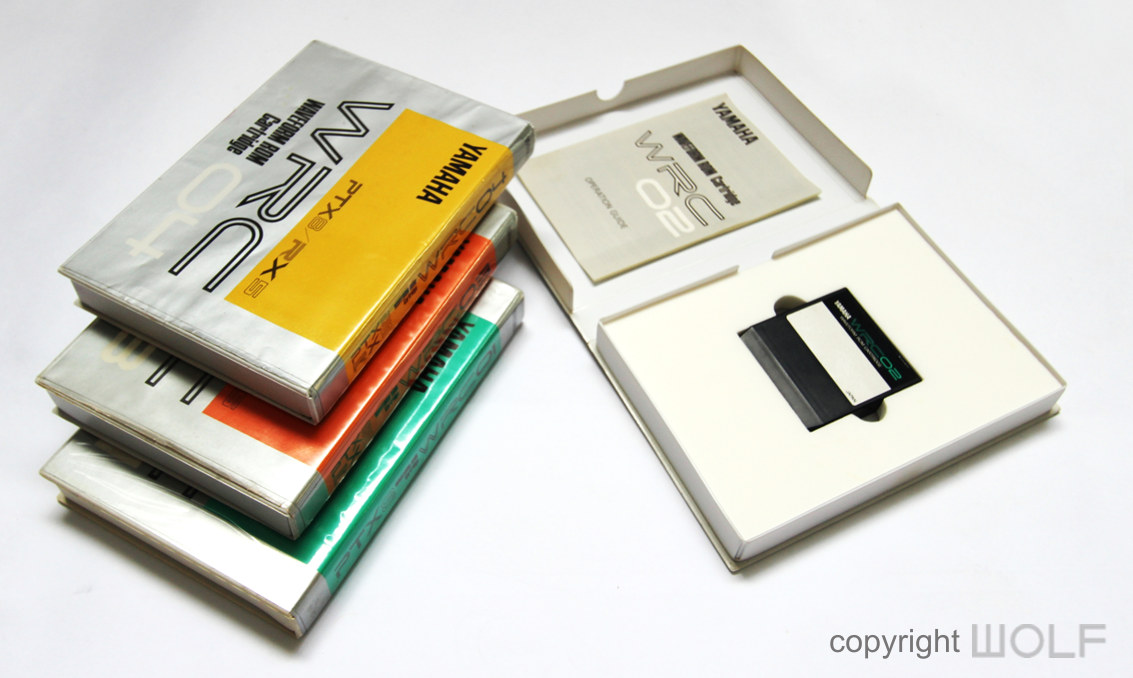
The RX5 had four ROM cartridges that could be purchased additionally.
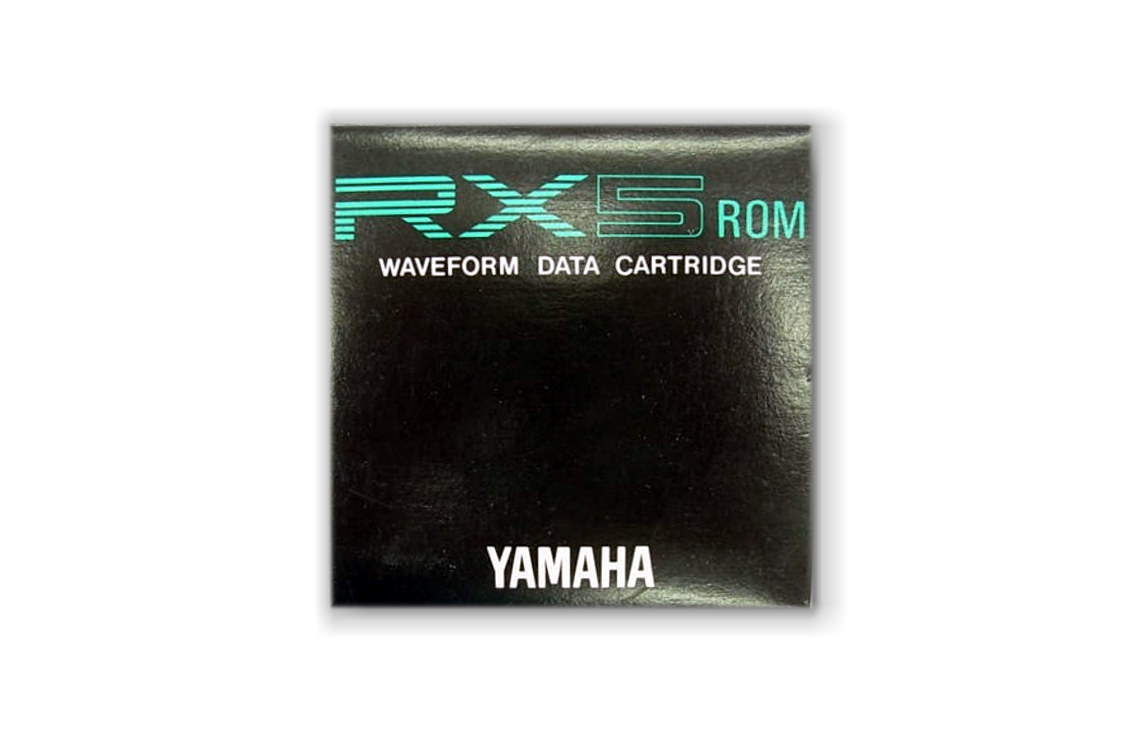
This ROM Cartridge came standard with the RX5
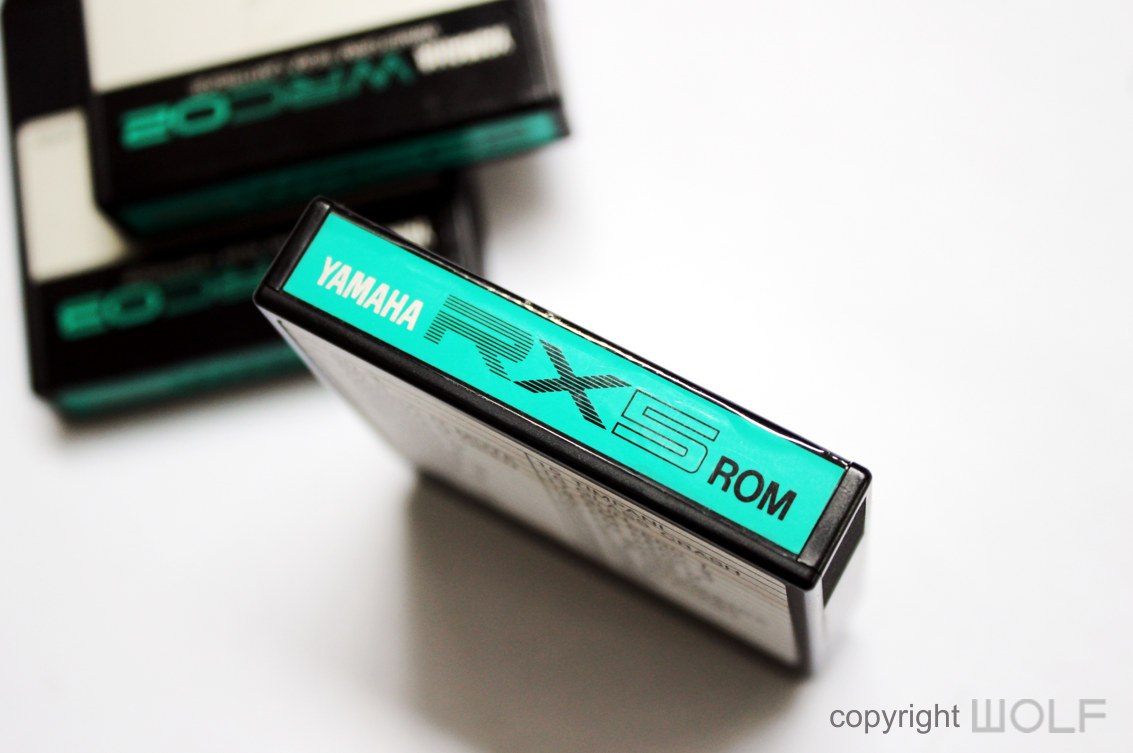
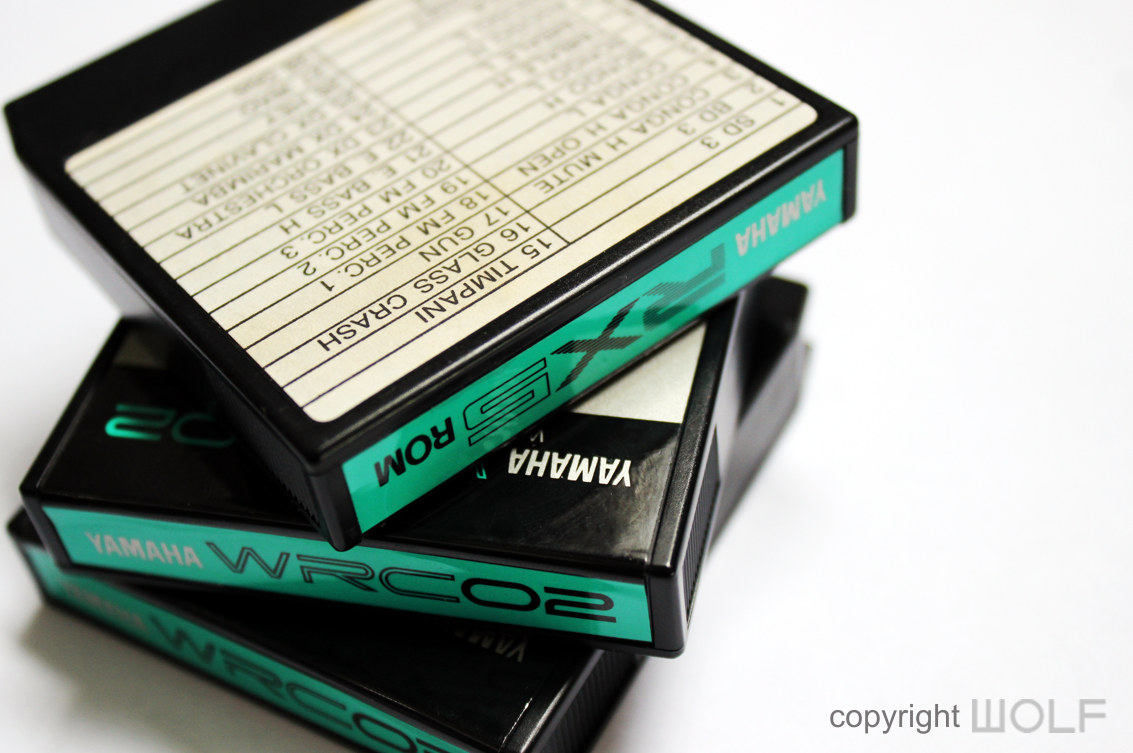

Original brochure
WOLF DESIGN EXCELLENCE SCORE = 6.8
Disclaimer
The information in this review is intended for informational or educational purposes to provide readers an understanding of how something may be seen from a certain design perspective. In this case it is from the view point of WOLF DESIGNS. As design is subjective this review should only be considered as an independent opinion. Information further to being of an opinion is provided to the best of our knowledge based on our own research at the time of doing the review. We cannot be held responsible for any inaccuracies or inconsistencies and reserve the right to change or update any content as appropriate.
The final responsibility of the design resides with the original manufacturer.

